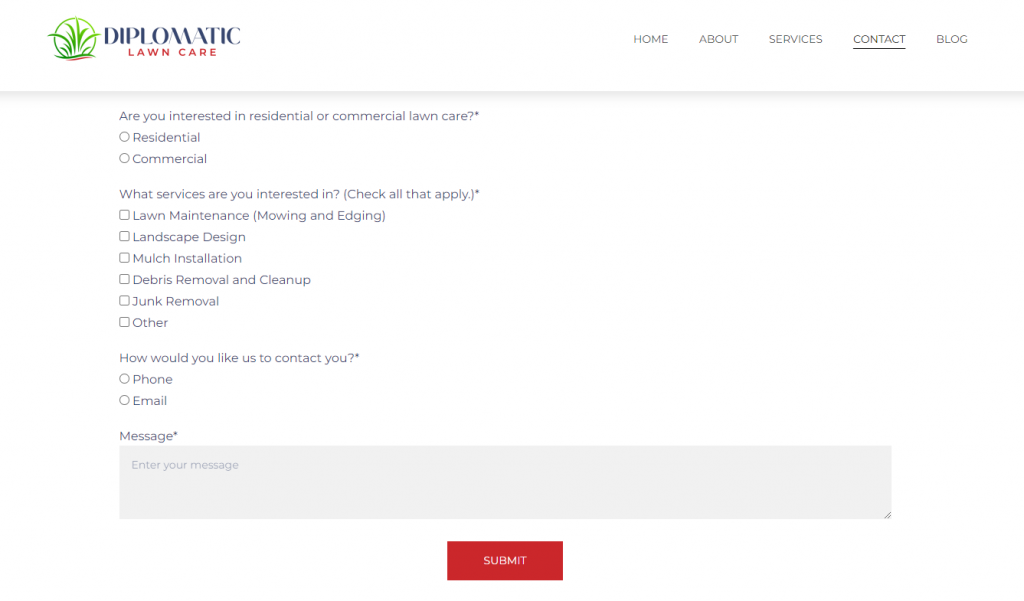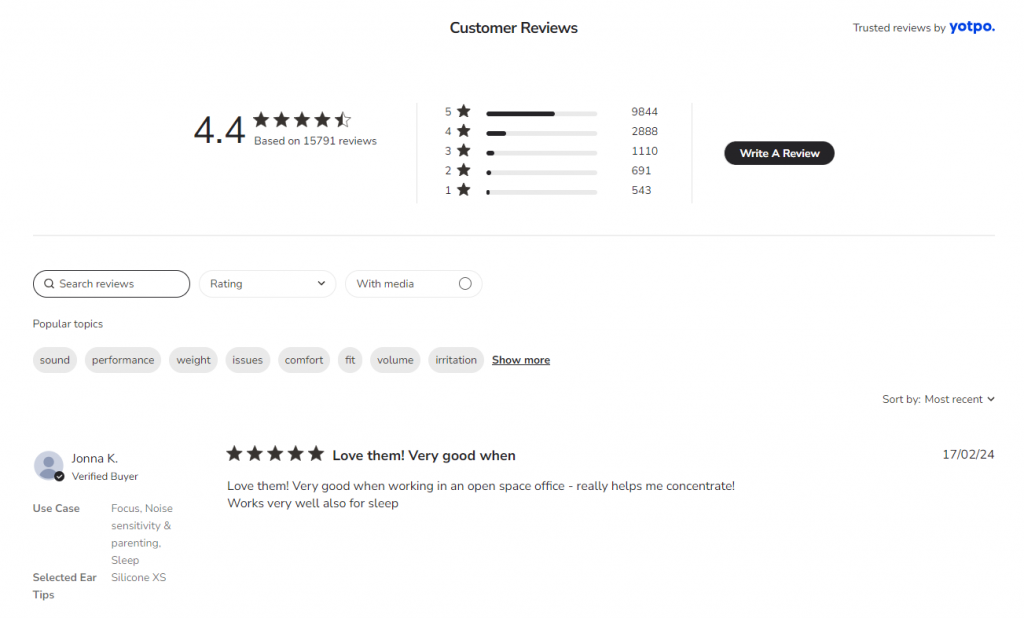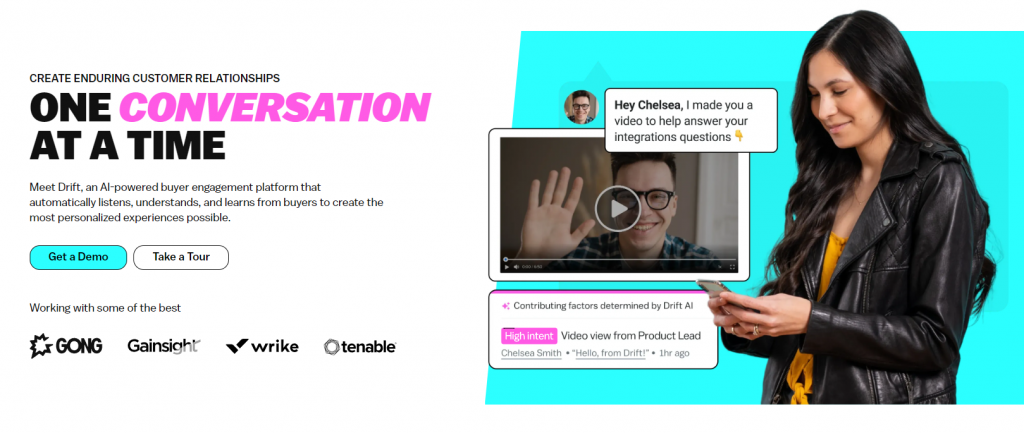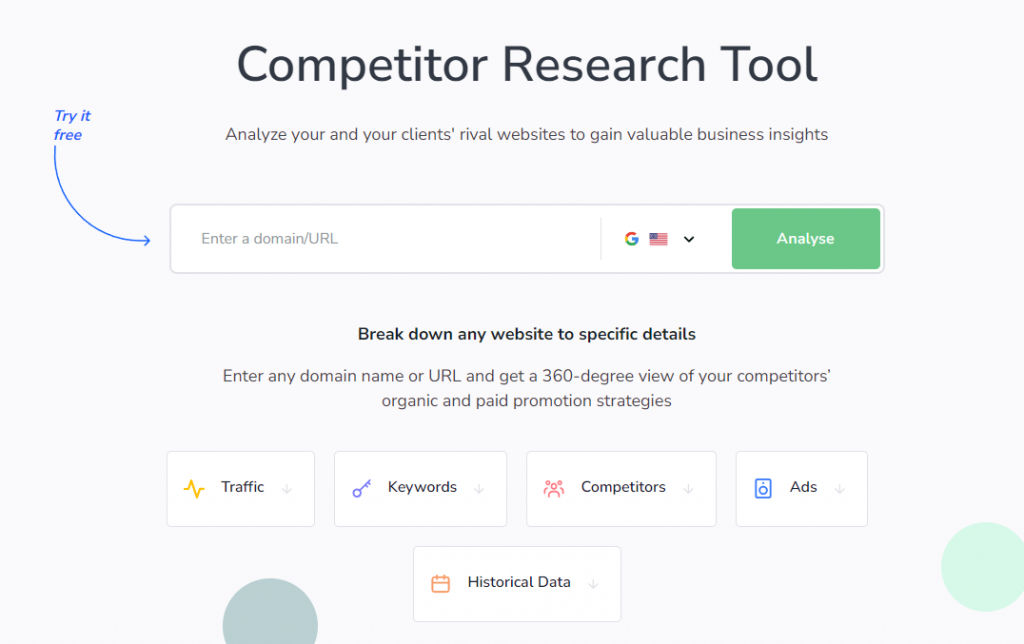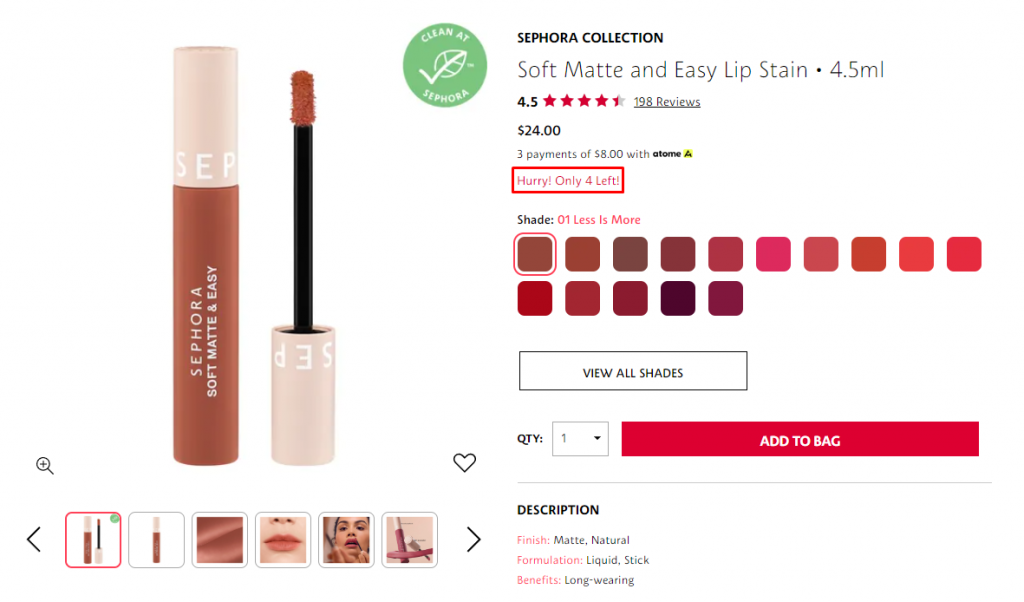How to Increase Your Conversion Rate With 15 Effective Strategies
Conversion rate optimization (CRO) refers to increasing the percentage of your website visitors who take your desired action, such as subscribing to your email list or making a purchase.
CRO involves analyzing and optimizing website elements to increase conversions and, ultimately, drive more revenue.
With this in mind, we will go through 15 strategies on how to increase conversion rates. By the end of this article, you will have a clear understanding of how to improve conversions and boost your online sales.

How to Increase Conversion Rates
Let’s get into the 15 strategies to increase your website’s conversion rate and scale your business. Feel free to begin with whichever resonates with you the most.
1. Simplify Forms
Depending on your marketing funnel stage, you can place forms on landing, contact, or checkout pages. However, make sure to keep them simple, as lengthy forms can overwhelm potential or existing customers, making them leave your website.
Here are some ways to simplify forms and get improved conversion rates:
- Reduce the number of fields. Only ask for necessary information to reduce time and effort.
- Use autofill. Fill in customer details automatically by using data from past interactions or their profiles.
- Add progress indicator. Add a bar or steps to show how far along they are to reduce anxiety.
- Keep the copy short. Use clear and concise language to explain what information is required and why.
- Pay attention to intuitiveness. Forms should be easy to navigate, with clear labels for each field and error validation messages for incorrect information.
Alternatively, add questions and multiple-choice answers to help customers understand what services you offer. For example, Diplomatic Lawn Care’s contact page has multiple-choice questions for their potential clients.
2. Showcase Social Proof
Social proof can boost conversions a lot. In fact, 93% of consumers make a purchase after reading online reviews.
Here are some highly effective forms of social proof for increasing conversions:
- Customer reviews. Feature reviews and testimonials to show user satisfaction.
- Influencer endorsements. Show endorsements or collaborations with well-known influencers in your industry to build credibility.
- Media mentions. Showcase any positive coverage from reputable media.
- Awards and certifications. Display any relevant awards that highlight your expertise and authority in your field.
To achieve the best results from this conversion optimization strategy, place social proof where your paying customers will notice it. Typically, it will be on product pages. Take an example from how Loop Earplugs added customer reviews on their product page.
Keep in mind social proof is only effective when it is genuine and authentic.
3. Track User Interaction
Tracking user interaction shows you which areas of your website engage users the most, where they may encounter issues, and what content drives the most interaction.
Use tools like Google Analytics to track these metrics and gain insight into how users are interacting with your website. It collects information about website traffic, page views, bounce rate, and average visit duration.
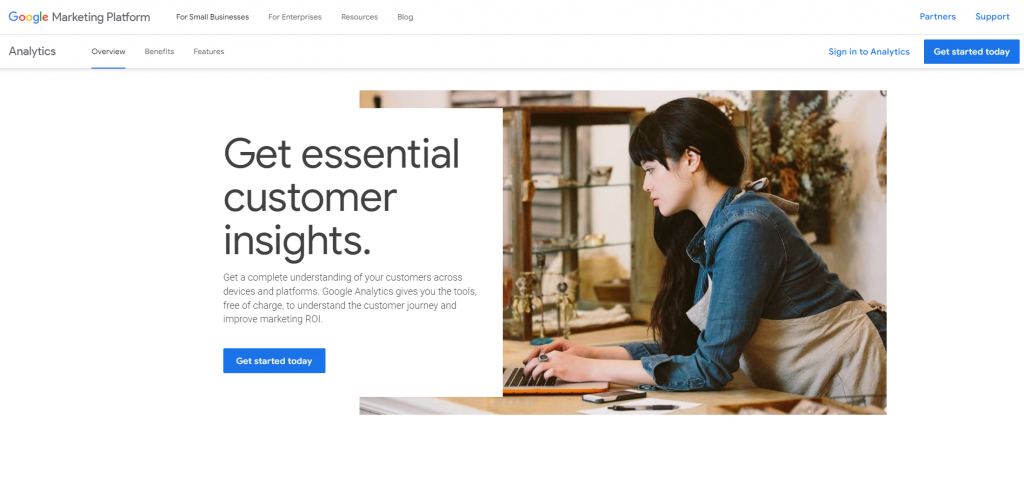
Another method is by using heatmap tools, such as Hotjar or Hostinger Website Builder’s built-in AI Heatmap. The tools provide a visual representation of where users click, scroll, and move their mouse on your pages.
When monitoring user interaction, these are the key metrics to check:
- Click patterns – determine if users are finding what they’re looking for. For example, it can help you understand whether you have a complicated checkout process.
- Scroll depth – find out how far down the page users are scrolling. Then, place your important content, such as promotional messages with a discount code, where users will notice it.
- Time on page – the amount of time users spend on a page can indicate how engaging that content is.
- Bounce rate – a high bounce rate on certain pages might indicate that the content is not meeting users’ expectations. If such a page is an essential part of your user journey, be sure to optimize it.
- Exit pages – identify the last pages users visit before leaving your site to find areas for improvement.
Suggested Reading
Learn more metrics related to web traffic and user interaction by reading our article on marketing agency metrics.
4. Add Live Chat
Integrating a live chat tool on your site can significantly boost customer support in real time, leading to happier customers and a better conversion rate.
Live chat can increase conversion rates by 40%, making it a valuable strategy for eCommerce sites. In addition, live chat helps gather feedback and identify customer pain points, enabling you to make improvements.
To add live chat to your site, use tools such as Intercom, Zendesk Chat, or Drift. These tools also let you customize the design and placement of the chat widget on your site.
Once you have your live chat set up, make sure to use it effectively – respond promptly and professionally to inquiries, provide helpful information and resources, and follow up with customers after their initial interaction.
You can also use AI chatbots to assist with basic inquiries and provide 24/7 support. This can improve response time while still providing a personal touch.
5. Optimize Value Proposition
A compelling value proposition helps potential customers understand why they should choose you over your competitors. An effective value proposition is concise and addresses customer problems with clear solutions.
For example, Apple‘s value proposition for the iPhone has centered on the seamless integration of software and hardware, leading to a superior user experience.
Another example is Slack, which aims to improve team communication and reduce email reliance, showcasing clear benefits for organizational efficiency.
To optimize your value proposition, start by thoroughly understanding your website’s purpose and its effectiveness in meeting your audience’s needs. This involves analyzing customer feedback, interaction, and market trends to ensure your products or services remain relevant.
Additionally, it’s crucial to regularly examine your competitors to understand your market position. Identifying what they offer and how they communicate their value can help you find unique angles or benefits that set you apart.
You can use tools like Google Trends or SE Ranking for competitor analysis. For SE Ranking, the analysis comes from traffic, keywords, ads, and historical data.
6. Improve Mobile Experience
A mobile-friendly site helps increase your average conversion rate by ensuring a seamless user experience. Improving the mobile experience of your website includes optimizing your design, content, and performance.
For mobile site design, make your buttons and links easy to tap and spaced out adequately to avoid accidental clicks. Additionally, ensure that your website has a responsive design and loads quickly on mobile devices.
Fortunately, many website-building platforms like WordPress or website builders like Hostinger Website Builder come with mobile-friendly themes by default.
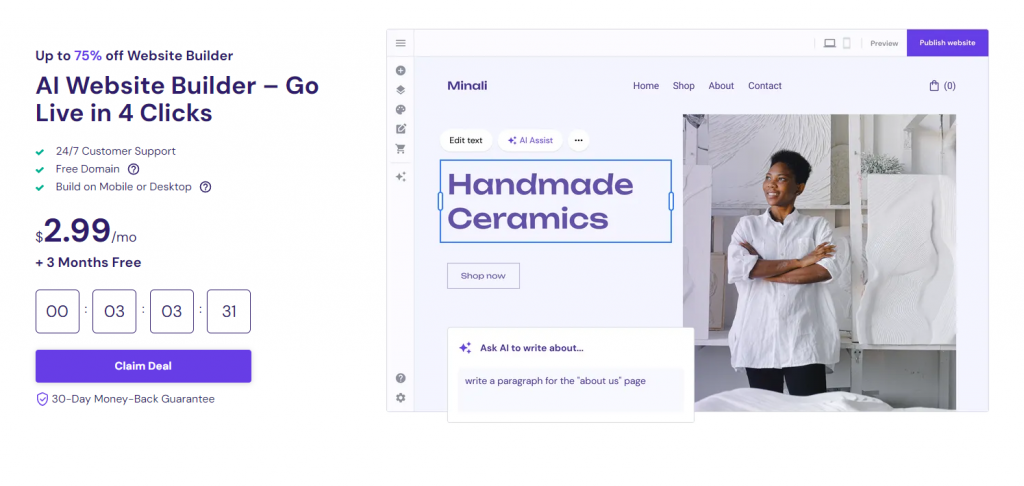
Content-wise, tailor your website specifically for mobile users by using shorter paragraphs, headings, bullet points, and larger font sizes. As for image content, reduce sizes for a faster loading time.
As for performance, leverage browser caching and minimize code to speed up your site. Use tools like Google PageSpeed Insights to check your site’s loading times on mobile devices.
7. Test Rigorously
A/B testing is a process of comparing two landing page versions with different elements, such as copy, buttons, and calls to action (CTA). Analyzing A/B test results helps you make informed decisions to increase conversion rates.
For effective A/B testing, consider elements such as multimedia (images or videos), color schemes, navigation menus, headlines, and landing page design. Here’s how to approach it:
- Choose what to test. Start with elements that have a significant impact on user behavior, such as landing pages, headlines, CTA buttons, or images. For instance, testing different headlines might reveal what language best captures your audience’s attention.
- Create variations. Create an alternate version of your page with changes to the selected element. For example, change only the headline of a page and keep images, body text, and CTAs the same.
- Use a tool. Consider tools like Google Firebase A/B Testing to set up and run your tests. These platforms distribute your content to different audience segments and gather performance data.
- Run the test. Run the test until you collect a statistically significant amount of data. This ensures that your results are reliable.
- Analyze results. Look at key performance indicators (KPIs) to determine which version performed better. If Version B of your landing page has a higher conversion rate than Version A, implement the changes from Version B.
Divide the A/B testing by creating marketing campaigns that target different segments of your audience and track the results separately.
For WordPress users, check out our guide to learn more about WordPress A/B testing.
8. Enhance Trust and Security
Establishing trust and security on your website is crucial for retaining visitors and converting them into customers. Users need to feel confident that their data is safe and that they’re interacting with a legitimate and secure site.
Here are some ways to enhance trust and security on your website:
- Highlight your privacy policy. Make your privacy policy easily accessible and ensure it clearly outlines how you collect, use, and protect user data. We recommend creating a separate landing page just for your policy and linking to it on your sale pages.
- Offer secure payment options. Use reputable payment gateways like PayPal or Stripe, which have built-in fraud protection measures. You can also display the logos of these payment providers on your website to further assure customers of their security.
- Choose or migrate to a credible web hosting provider. Credible providers such as Hostinger offer you SSL certificates, a malware scanner, protected nameservers, and DDoS protection.

9. Create Urgency
Creating urgency is a performance marketing technique that can boost your conversion rates. It uses scarcity and time-limited offers to encourage consumers to act quickly.
Here are some tips to effectively create urgency:
- Limited time offers. Emphasize the expiration date, such as “Ends in 24 hours!” to prompt immediate action.
- Countdown timers. On your landing page, visually showcase the time left on offers to encourage quicker decisions.
- Exclusive promotions. Provide special deals to specific groups with a deadline, making the offer seem more valuable and urgent.
- Flash sales. Organize short, intense sales periods to create a buzz, driving quick purchases.
- Low stock alerts. Add a note like “Only 3 left!” to emphasize scarcity and increase the item’s perceived value. Check out this example from an eCommerce website, Sephora.
Aside from the tips above, you can also create high-converting pop-ups by watching our webinar with Sofie from Sleeknote.

10. Clarify CTAs
A well-crafted CTA can significantly impact your site’s conversion rates by providing a clear path for users to follow. To make CTAs more engaging, consider the following design and placement strategies:
- Size and shape. Larger buttons are more noticeable, but ensure they’re not too big.
- Placement. Position CTAs where they’re most likely to catch the user’s eye, such as above the fold for immediate visibility or at the end of content sections as a natural next step.
- Whitespace. Surround your CTAs with ample whitespace to make them stand out more and reduce visual clutter that could distract from the message.
- Animation. Subtle animations, like a hover effect, can draw attention to the CTA without being distracting.
- Color contrast. Use colors that contrast with your site’s color scheme to make your CTA buttons pop and grab attention. Below is an example taken from Mutable.ai, which uses the color blue, which stands out on the black background.
11. Personalize User Experience
Personalization can significantly improve your conversion funnel by making the user experience more relevant and engaging.
For example, platforms like Netflix and Amazon have successfully used personalization to recommend content and products, leading to higher user satisfaction and increased sales.
To successfully personalize user experience and provide relevant suggestions, check the user’s browsing history or previous purchases to recommend products they are more likely to be interested in.
Another way to personalize the user experience is by providing different pages for different demographics. For example, a clothing brand may have a separate version of its website specifically tailored for men and another for women.
It’s important to note that personalization must be done ethically and with the user’s consent. This means being transparent about data collection and giving users the option to opt out of personalized recommendations.
12. Simplify Navigation
A well-structured navigation improves site aesthetics, builds trust, ensures consistent user experience across devices, and, ultimately, increases conversion rates. There are a few ways to simplify your site navigation.
First, create a clear site hierarchy. This means designing your whole website flow to help map out how many pages you need. Then, simulate the customer journey to ensure its simplicity.
After creating a clear hierarchy for your site, you’ll understand how many pages you need. If possible, opt for a one-scroll page design so visitors don’t need to load other pages to get the information they need.
13. Integrate Engaging Content
The average human attention span is 8.25 seconds. Integrating engaging content like videos, infographics, and interactive elements is key to retaining visitor attention on your website – which helps boost conversion rates.
To create engaging content, you must understand what your target audience prefers. Younger audiences prefer shorter video content, like TikTok or YouTube Shorts. Older audiences may prefer longer, more informative videos.
Here are more tips for creating engaging content:
- Infographics. Focus on clear hierarchy, alignment, and white space when designing your infographics. Pick a color scheme that aligns well with your website content.
- Interactive elements. These elements include quizzes or games to keep visitors engaged and interested in your website.
- Content value. Whether it’s solving a problem, answering a question, or providing insights, make sure your content is relevant to your audience’s needs.
- Storytelling. Share customer success stories, behind-the-scenes insights, or the journey of your brand to build a deeper connection with your audience.
Write SEO-friendly content and update it regularly to keep it fresh and relevant. Outdated or repetitive content can drive away potential customers.
14. Address Objections Proactively
Addressing customer objections proactively on your website can significantly enhance the user experience and increase website conversions. Let’s go over common customer objections and how to solve them:
- High price – emphasize the product’s value and benefits prominently on your pricing page. Highlight features, long-term savings, or the superior quality that justifies the price. Additionally, offer flexible payment plans or discounts for new customers.
- Product fit – provide detailed descriptions, specifications, and real-world use cases that demonstrate the product’s relevance.
- Trust issues – gain your visitor’s trust by featuring customer testimonials and success stories. You can also offer a money-back guarantee if your products don’t meet expectations.
- Poor quality – showcase high-resolution product images, engaging demos, and authentic customer reviews that affirm the product’s quality. Providing tangible proof of your product’s performance also works.
- Complexity – offer comprehensive tutorials, easy-to-follow guides, and detailed FAQs that showcase the product’s ease of use.
15. Optimize Page Speed
Slow loading times can frustrate users, leading to higher bounce rates and lower engagement. In fact, a delay as small as half a second can reduce your conversion rates by a half percent.
Here are some useful tools to analyze your website performance, optimize your page speed, and increase your conversion rate:
- GTmetrix. Analyzes load times and offers detailed reports on factors slowing down your site with practical improvement tips.
- Google PageSpeed Insights. Gives speed scores for your site’s mobile and desktop versions, along with Google’s optimization suggestions.
- Semrush. Beyond SEO, it audits your site to identify speed issues, tracking performance over time and against competitors.
- Ahrefs. Known for SEO insights, it also spots speed-related technical issues, helping enhance both site speed and SEO.
When choosing one of these tools for conversion rates, consider the features most important to you and your business goals.
For example, if you prioritize mobile optimization, Google PageSpeed Insights may be the best fit for you. If competitor analysis is a key focus, Semrush or Ahrefs may offer more comprehensive insights.
Conclusion
An efficient conversion rate optimization (CRO) strategy helps generate more revenue, build a loyal customer base, and stay ahead of competitors.
In this article, we have explained 15 practical strategies to increase your conversion rate. Let’s recap the most important ones:
- Simplify website navigation – make your forms short, CTAs clear and on point, and website fast.
- Perform A/B testing regularly – play around with your copy, design, and CTA placement to find out what brings you more conversions.
- Optimize the purchasing process – make sure your checkout page is easy to follow, provide all relevant payment information, and highlight your refund policy.
- Track your website data – track your user interactions with an analytics tool to find out the areas for improvement.
Remember that while you can implement the majority of strategies by yourself, you also need to use a reliable web hosting service to ensure your website is secure and loads quickly.
Finally, always keep the customer in mind and address any concerns they may have to increase your conversion rate.
How to Increase Conversion Rates FAQ
Read the most commonly asked questions on how to increase website conversion rate.
What Is a Good Conversion Rate?
The percentage of a high conversion rate varies depending on your industry, niche, and desired result. Generally speaking, a conversion rate that falls between 2-5% is considered good.
How Can You Increase Your Conversion Rate?
Enhance website conversion rates by optimizing website usability, driving more traffic, creating high-quality content with compelling landing pages and CTAs, conducting A/B testing for data-driven optimization, and resolving technical issues to improve user experience.
What Factors Affect a Conversion Rate?
Various factors can affect your conversion rate, including product type and cost, traffic source, and even the device used. Industry standards also have a major impact, as each sector has its own average rates reflecting the industry-related challenges and opportunities.
